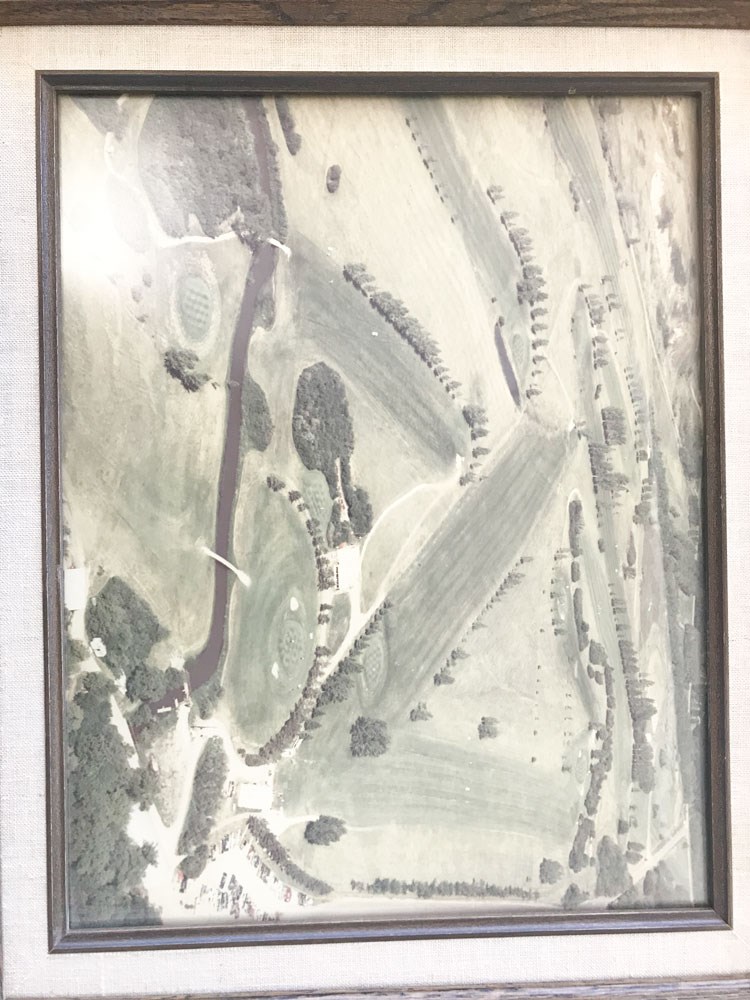Editor’s Note: The TS&M Woodlawn Golf Course is celebrating its 75th year this year. Over the next few pages, you’ll find several articles on the course’s past, present and future. Some of the information in this article is from an article written by former Mercury editor Jordan Baker in honour of Woodlawn’s 70th anniversary.
Like a fine wine, the TS&M Woodlawn Golf Club is getting better with age.
The course is celebrating its 75th anniversary this year. And it has a rich history of great rounds, memorable tournaments and exciting moments. There have been trials and tribulations long the way, but the course has evolved to its status today as one of Saskatchewan’s best.
Woodlawn opened in 1945 as a nine-hole course.
Shirley Andrist, who was a member at the course for decades, recalls playing golf north of Estevan, and she attributes the building of Woodlawn in its current location to Eric Quist, a local grocer and, at one time, an MLA.
Her father was a good friend with Quist, and Andrist said: “He was very instrumental in making the decision that we needed a golf course down at the river, at the park. He was the one man who started the movement to have the golf course down there.”
Woodlawn became an 18-hole course and eventually converted from sand greens to grass greens in the late 1960s. It continued to grow into the 1980s, when the board and members began thinking about the future and growth. The biggest roadblock, which was going to get bigger, was the dwindling water supply.
Rick Rohatyn was a board member in the 1980s prior to his term as president starting in 1988.
In 1985, the course was scheduled to host the Saskatchewan Men’s Amateur Championship, but the greens were showing the stress of significant winterkill. The tournament was moved to North Battleford. It wasn’t the only time the tournament was moved out of Estevan, in fact, the prestigious event was supposed to be here in 2016, but a deluge of rain submerged the course and the rest of the city two days before the tournament was supposed to begin.
Losing that tournament in 1985 marked the beginning of some difficult years for Woodlawn. Rohatyn described the late 1980s as a “tumultuous” time for the course.
Drought had spread across the region, and the course’s water supply dropped significantly. With the course in poor shape, membership declined, and the funds were drying up as much as the grass.
In 1986, the executive was approached by Winnipeg-based Western Golf Management to take over the club.
“They saw a struggling golf course, and they thought they could move in and take over,” said Rohatyn. The membership vetoed the sale in October of that year.
The course was losing money, but the members and board were determined to get through the difficult times themselves.
New greens and tee boxes were built as part of a redesign of the front nine in 1986, but the greens deteriorated by the fall of 1987, after an otherwise good season, as drought conditions continued. It was in that year, crews began drilling water wells to supplement the course’s water supply.
There was little to no spring runoff in 1988. The Boundary Dam Reservoir was storing water to continue supplying the power station. The golf course was getting water from the City of Estevan’s lagoons, but the acidic, salty water did little to help the fairways and greens.
When Rohatyn was the incoming president of the board in 1988, he had three goals: redevelop the back nine, build a new clubhouse and install a new irrigation system. Back nine designs by Les Furber were presented in May 1988. It wouldn’t be until 2012 that Furber’s layout would be implemented.
Held back as the course dealt with drought, it was the flood damage incurred in 2011 that ultimately made 2012 the time to rebuild.
With the course drying up like a grape in the sun, emergency measures went into effect in the late 1980s to keep the course in some degree of playing shape. Golf carts were quickly turning fairways to dust, and during one meeting there was a motion to ban carts from the course all together. Ultimately, cart paths were designated and a strict cart-paths-only rule was put in place. Shortly thereafter, money was invested in a plan to pave cart paths around the entire course.
Rohatyn said the course dealt with little or no water from 1985 until about 1994, when the newly built Rafferty Dam filled.
By the early 2000s, there was a sense Woodlawn needed to take another step forward.
The three-phase project to renew Woodlawn, on hold since the ’80s, began in 2003, under the presidency of Warren Waldegger. That meant a completely new irrigation system, a new clubhouse and pro shop and the new back nine.
Over the years, a big part of Woodlawn’s legacy has been about growing the game. That starts with the course’s junior program, which has sent a number of young golfers to U.S. schools on scholarships.
Woodlawn’s junior program has been strong since it began under the leadership of Eldon Rondeau and Bob Lausch. The course held the Golf Sask. Junior Golf Championships six times between 1977 and 2007. Rohatyn helped keep it going as junior chairman from 2000 to 2009.
As for Andrist, she always found her enjoyment of the game to be puzzling.
“I never knew why I was so fond of a game at which I did not excel,” she said.
Playing with friends, if you were to hit one or two good shots in a round, that was enough to go back next time.
“That’s what kept me going, always thinking, ‘Maybe one day.’”



